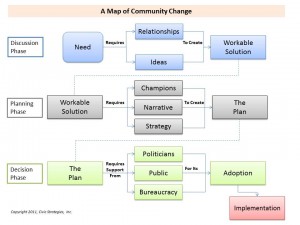On a Sunday morning a few weeks from now, the 47th running of the New York Marathon will begin on Staten Island as 50,000 runners and wheelchair athletes thunder over the Verrazano Narrows Bridge into Brooklyn. They’ll loop through Bay Ridge and into Williamsburg, then cross into Queens like an invading army. They’ll begin thinning out in Long Island City before heading into Manhattan across the high-arching Queensboro Bridge (the heartbreak hill of New York marathoners).
In Manhattan they’ll turn right and head north until they reach the Willis Avenue Bridge and cross into the Bronx, where they’ll basically make a U-turn back to Manhattan. The rest of the 26.2-mile run will be, comparatively speaking, a breeze, through Harlem, into the Upper East Side, with a triumphant finish in Central Park. The world’s best runners will finish in under two and a half hours. Mere mortals will take a while longer.
It’s an amazing spectacle. And if you’re lucky enough to see it (or better yet, participate in it), you may wonder: Where did the inspired idea of running a marathon through five boroughs and all these neighborhoods come from? And what does it tell us about how things like this happen in cities?
Answer: It came from a meeting in 1975, where two people found a way of connecting their entirely different needs in a way that created not just a common solution but a sensation. The central figures were Percy Sutton, the Manhattan borough president, and Fred Lebow, head of the New York Road Runners.
The two could not have been more different. Sutton was a polished lawyer and politician. Lebow was a Romanian refugee who made money in New York’s garment district before falling in love with long-distance running. Sutton knew power; Lebow knew showmanship. In short, they were the odd couple.
Their needs, too, were completely different. During one of New York’s worst years ever, Sutton was looking to change the narrative about his city, to give it something hopeful in the Bicentennial year of 1976. (He also hoped to become New York’s first black mayor.) Lebow wanted something to distinguish New York’s marathon from the much older and better known Boston Marathon. At the time, New York’s race was run entirely inside Central Park, with runners dodging cyclists and families pushing strollers.
What brought them together was a misunderstanding. Lebow and others were talking about running the marathon in the streets (as Boston’s was). By the time the idea reached Sutton, it had somehow become a race through every one of New York’s boroughs. Sutton was intrigued by the idea; Lebow, once he heard what was on the table, was horrified. (The cost, the logistics, the likelihood that something would go wrong . . . this was a crazy idea.)
And here’s where the magic happened. Once they sat down and started talking, the two men found answers to every objection. And more: They found greatness in the idea. This wasn’t just a partial answer to New York’s image problems or a way to make the New York Marathon distinctive. This was a way of creating a spectacle that could rival 1945’s V-J celebrations in Times Square . . . and, if successful, could be held every year.
Their relationship held Sutton and Lebow together as they worked through the security, logistics, organizational, and cost issues. But the opportunity of a great civic spectacle became their driving force.
If anything, the New York Marathon has grown beyond anything Sutton and Lebow could have imagined: it’s a showcase of great runners (and tens of thousands of average ones) and great urban neighborhoods, an economic and tourism boost for the city, an irresistible draw for the news media, and a civic celebration. But it also is an illustration of how legendary civic projects come about: when odd-couple leaders find ways of connecting their needs and creating solutions that become greater than the problems they began with. You see it in the origins of Atlanta’s Beltline project and the reinvention of Denver’s Union Station.
There is no way to plan for these things. Having an open door and lots of relationships helps. So does having a creative mind that can connect needs in creating solutions. But luck plays a role. How else can you account for the fact that, had Percy Sutton not misunderstood Fred Lebow’s original idea, we would not today have one of the world’s greatest athletic events and urban celebrations?
A version of this posting appeared on the Governing website.
Photo by Peter Miller licensed under Creative Commons.
